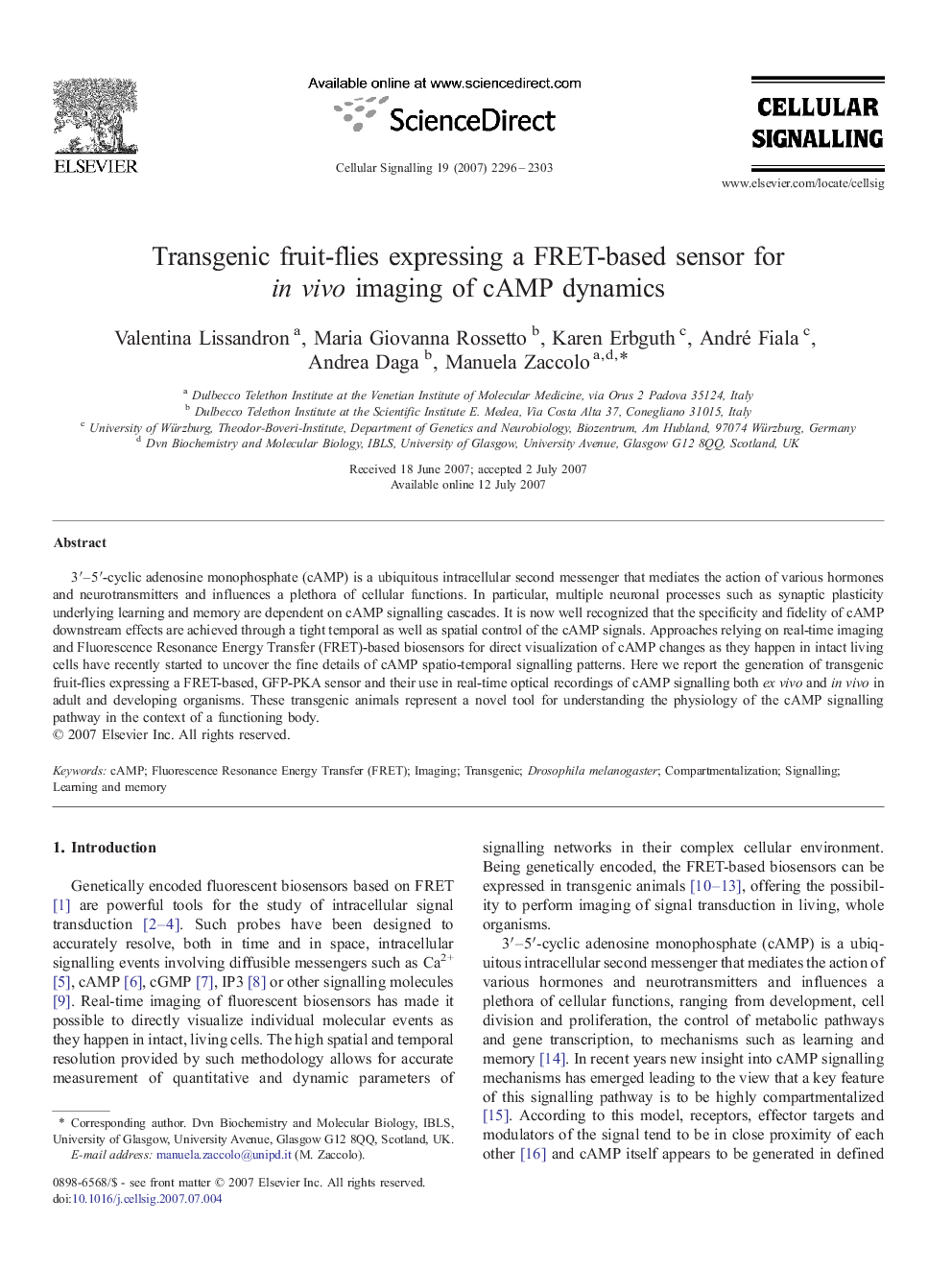| Article ID | Journal | Published Year | Pages | File Type |
|---|---|---|---|---|
| 1964296 | Cellular Signalling | 2007 | 8 Pages |
3′–5′-cyclic adenosine monophosphate (cAMP) is a ubiquitous intracellular second messenger that mediates the action of various hormones and neurotransmitters and influences a plethora of cellular functions. In particular, multiple neuronal processes such as synaptic plasticity underlying learning and memory are dependent on cAMP signalling cascades. It is now well recognized that the specificity and fidelity of cAMP downstream effects are achieved through a tight temporal as well as spatial control of the cAMP signals. Approaches relying on real-time imaging and Fluorescence Resonance Energy Transfer (FRET)-based biosensors for direct visualization of cAMP changes as they happen in intact living cells have recently started to uncover the fine details of cAMP spatio-temporal signalling patterns. Here we report the generation of transgenic fruit-flies expressing a FRET-based, GFP-PKA sensor and their use in real-time optical recordings of cAMP signalling both ex vivo and in vivo in adult and developing organisms. These transgenic animals represent a novel tool for understanding the physiology of the cAMP signalling pathway in the context of a functioning body.
